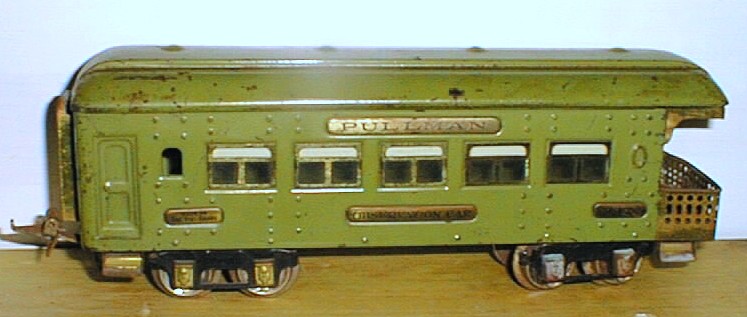|
No. 141 Pullman |
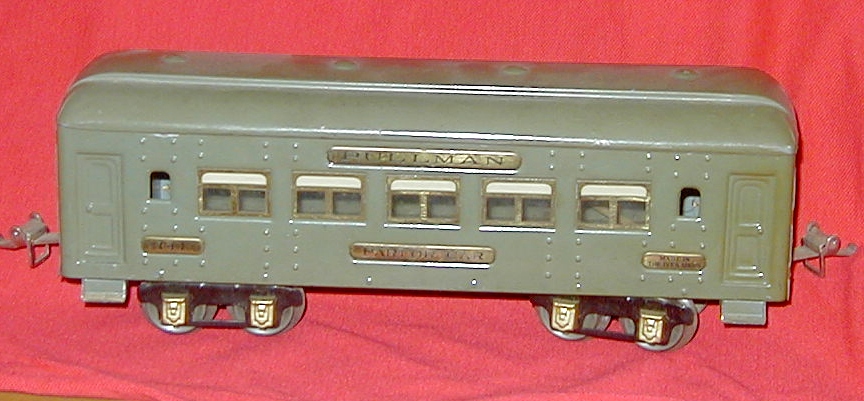
Circa 1926-1927 - Early gray 141 Pullman from the Greyhound set. These had no vestibules, early Type D, M-style trucks, standard couplers attached with rivets, no internal lights. These sets have also been found in a rare Cadet Blue.
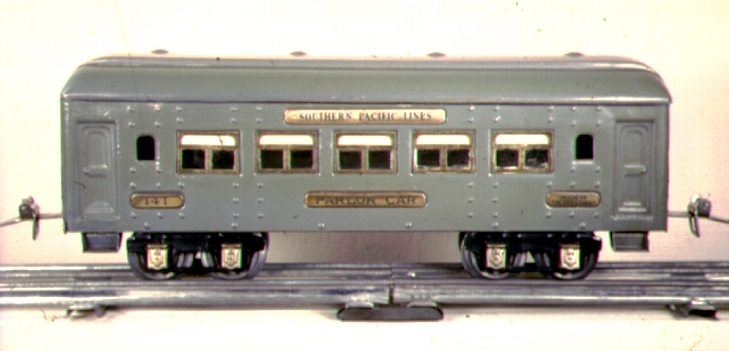
Circa 1927 - Rare Southern Pacific gray car.
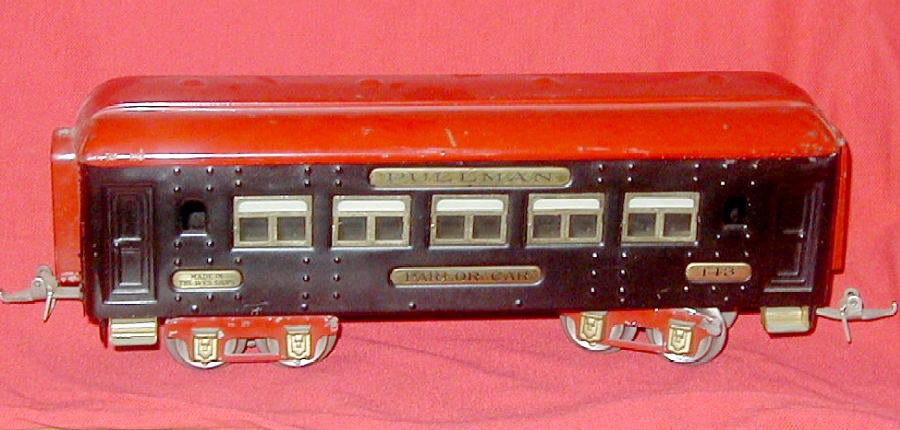
Circa 1928 - Early Black Diamond car, carries the 143 number that was used in 1928 to denote cars with vestibules.
Circa 1928 - Mottled gray or sometimes called 'Desert Sand' the plates on this one are blank but it also exists with the correct 143 number plate.
Bottom of Mottled gray car - note the snake pull coupler is not one piece but two pieces soldered together. This can be found on some early 1928 items, probably because they didn't have the new 'snake pulls' available yet.
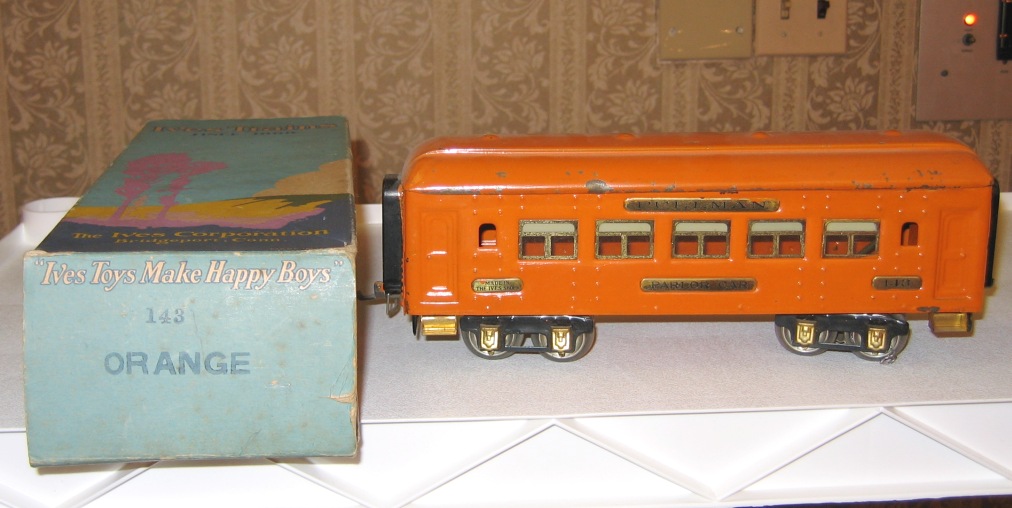
Circa 1928 - The orange cars in 1928 were lighter, had
the earlier Type D, M-style trucks, matching orange roofs, black vestibules
and of course the higher 143-144 numbers. The example above came in
an original scenic box with The Ives Corporation markings, These cars with the later scenic boxes came with an uncataloged set that was sold in either 1929 or 1930. Below is a 'tweener' which
uses the 1929 body with the black vestibles and the 1928 trucks but with
the 141 numbers (this car came in a 1929 set).
See 1930
orange
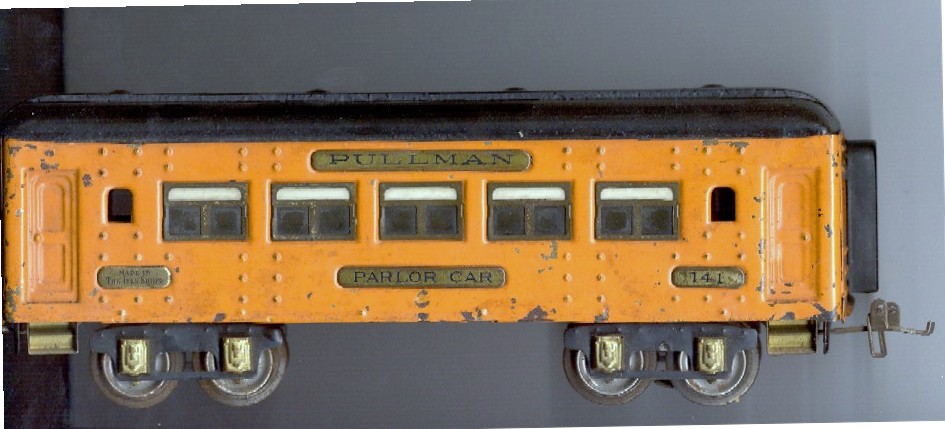
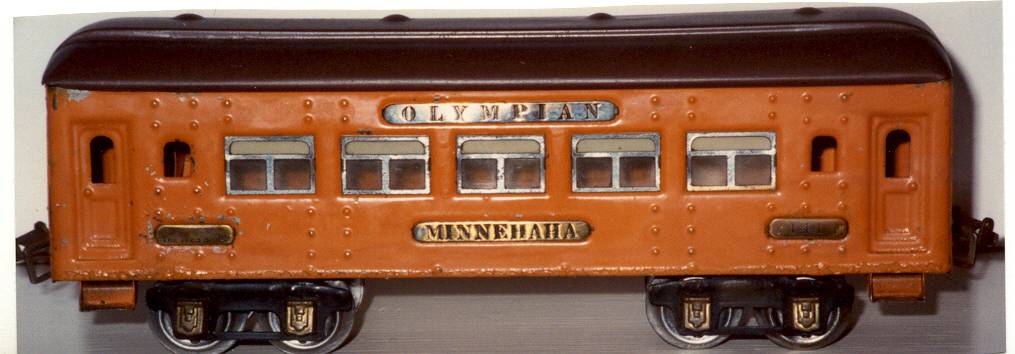
Mystery - This car was originally gray, then repainted orange. The plates are obviously not production, but too good to be homemade. Minnehaha is an actual car name found on the original Milwaukee Road passenger train. This car was found in a set with two other cars having similar plates and an orange locomotive (3257) that had been repainted over gray. Strangely we have seen two of these sets that were found in two different locations.
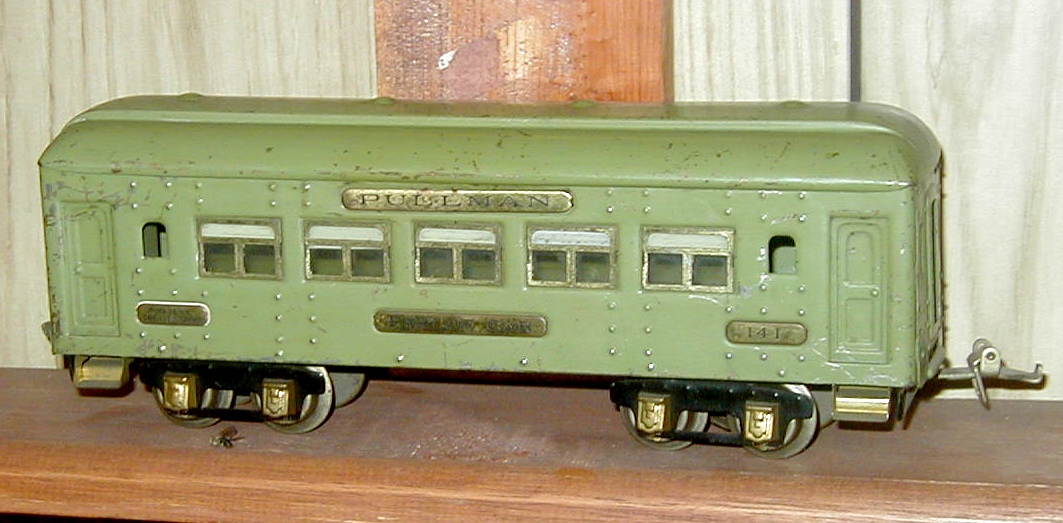
Circa 1928-1929 - Came in the rare Greenway set - this particular car used the old gray body. this car is green with snake-pull couplers, but has no outside vestibules. We've seen these cars with lights or without lights. In 1928, IVES used two sets of numbers for these long cars. 141-142 and 143-144. The higher numbers denoted cars with attached brass vestibules, but the example below is the same color but has the outside vestibules. We don't believe these came with the Greenway sets but were actually sold with a 3257 in a matching pale green as the 'Dixie Flyer' set or an un-cataloged 1928 set. See Comparison pictures below.
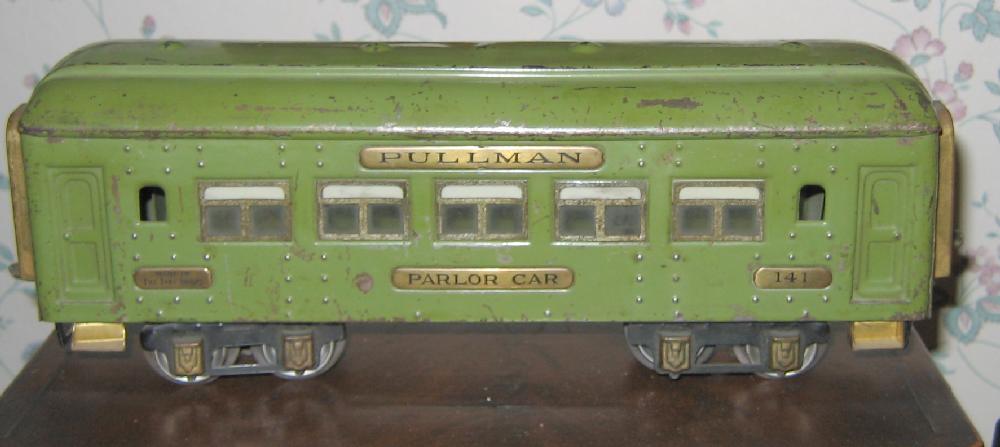
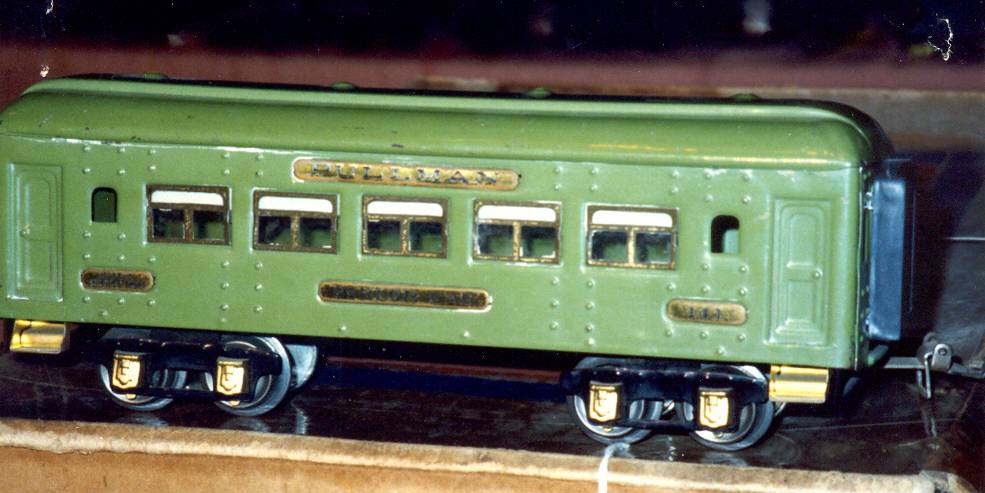
Circa 1928-29 - These cars are a darker green than the ones above and have black outside vestibules and snake pull couplers.
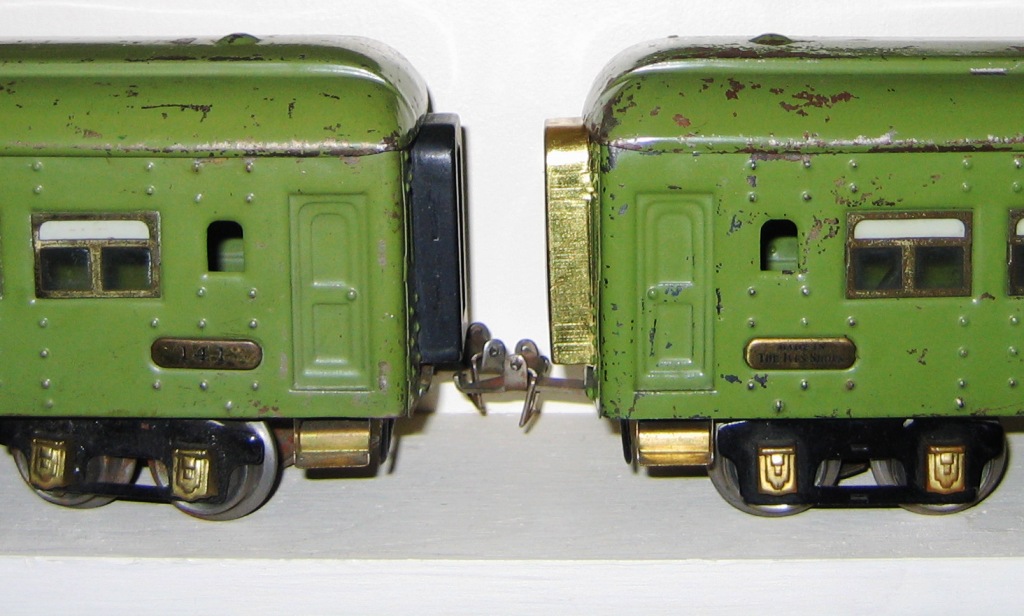
Close up showing two of the green cars, one on left has brass vestibules and 1929 trucks. The one on the left has black vestibules and 1928 trucks. The example on the left also is NOT lighted? See Below.
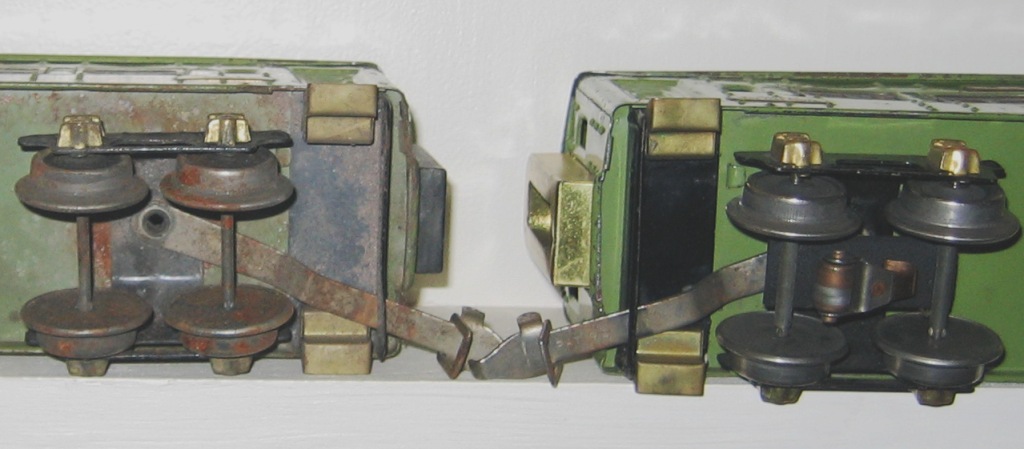
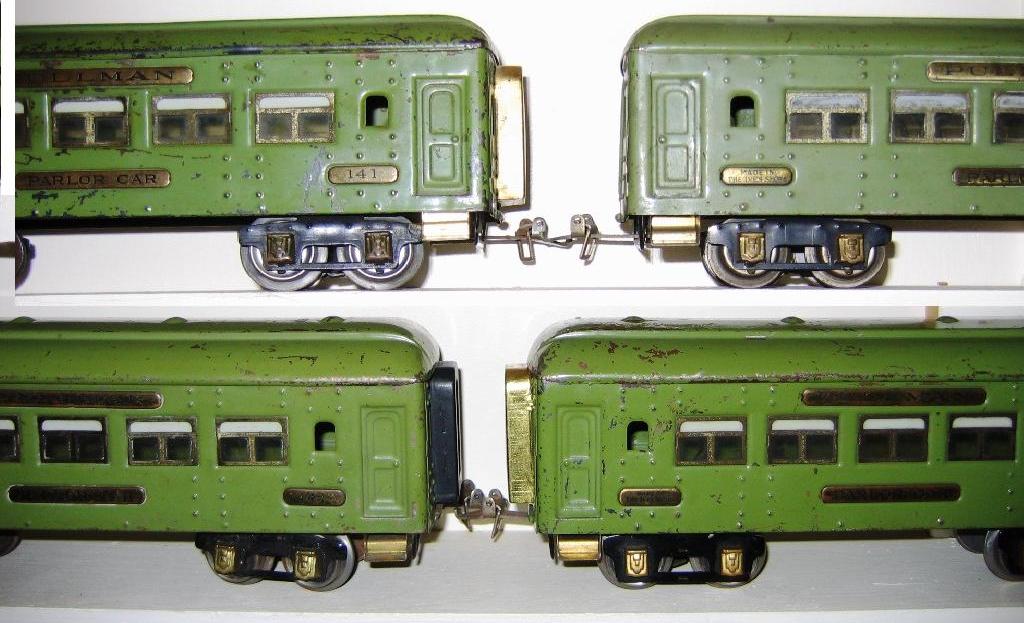
This picture shows all four variations of the Green 141 cars from 1928-29. Upper left 28 trucks, brass vestibules, lighted. Upper right 1928 trucks, NO vestibules, lighted. Lower left Black vestibules, NO Lights, 1928 trucks, Lower right Brass vestibules, lighted with 1929 trucks.
Circa 1929 - Copper plated with nickel trim, the Major HOD Seagrave Special Deluxe has type E, M-style trucks, snake pull couplers and external nickel plated vestibules.
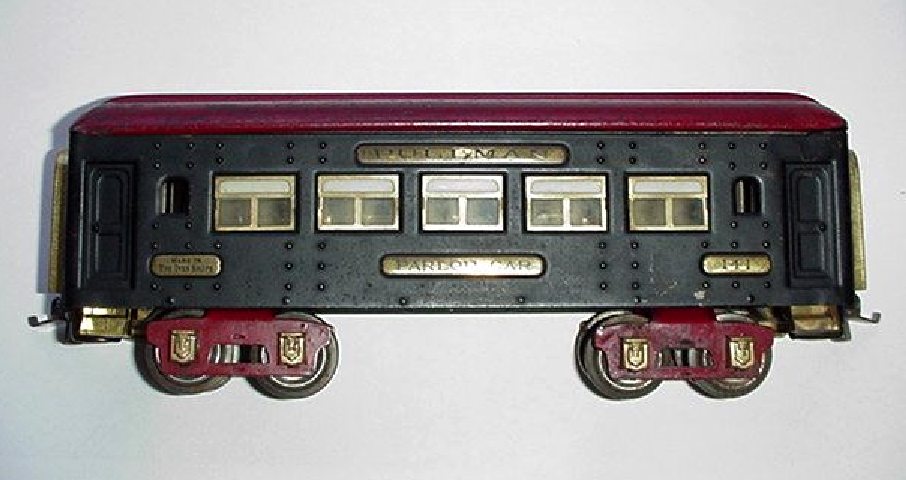
Circa 1929-1930 - Both the 141 car above and below came from Black Diamond sets. You can tell the car above is from the 1929 set with the black engine because the black paint is almost a flat black, while the car below has glossy black paint and came with the 1930 set with the red engine.
Circa 1930 - The above car was part of the Columbian Set. The 1930 orange cars have black roofs, brass vestibules, type E, M-style trucks and the orange paint is much darker. In 1929 these cars came with the 1122 steam locomotive and is often referred to as the Halloween Set because of it's colors
Circa 1926-1927 - Gray observation, no lights, type D, M-style trucks, standard couplers.
Circa 1928 - This car probably only came with the Dixie Flyer in 1929. Paint is the pale green, but has snake pull couplers, outside brass vestibules and inside lights.
Circa 1928 - Flat black, Black Diamond car from 1928 has 144 number plate, outside red painted vestibules, snake pull couplers and inside lights.
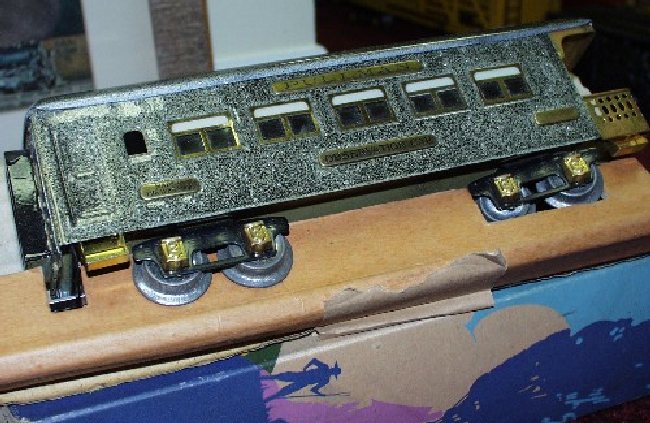
Circa 1928 - Pictured above is a Mottled gray No. 144 observation car in Exc condition with it's original box. Below is a side view of the car and the end flap on the box. This car was probably sold either late in 1928 or 1929 as it came in the scenic box.
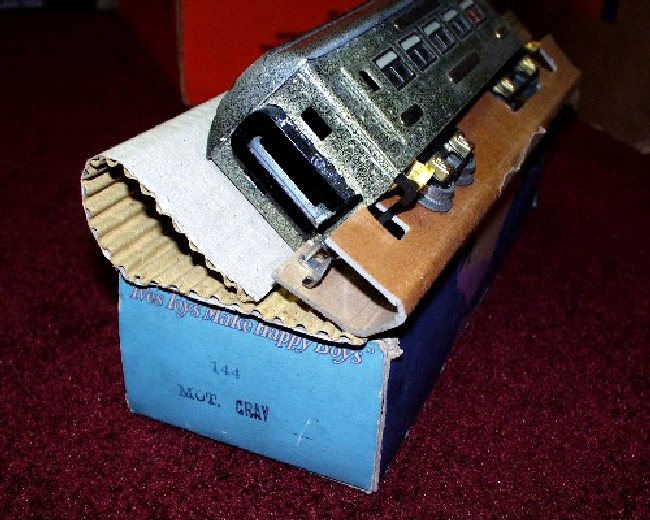
What's wrong with this picture?? an early 1928, 144 observation car in Mottled Gray with blank brass plates, two piece snake pull couplers and a properly numbered scenic box with The Ives Corp labeling? Everything appears original, but smart logic has always placed these scenic boxes to 1929-30? This car was found all by itself and maybe that's why it's still mint. Possible explanation is that Ives had these left over and sold them separately or with different locomotives to get rid of inventory. The set below would tend to corroborate that theory
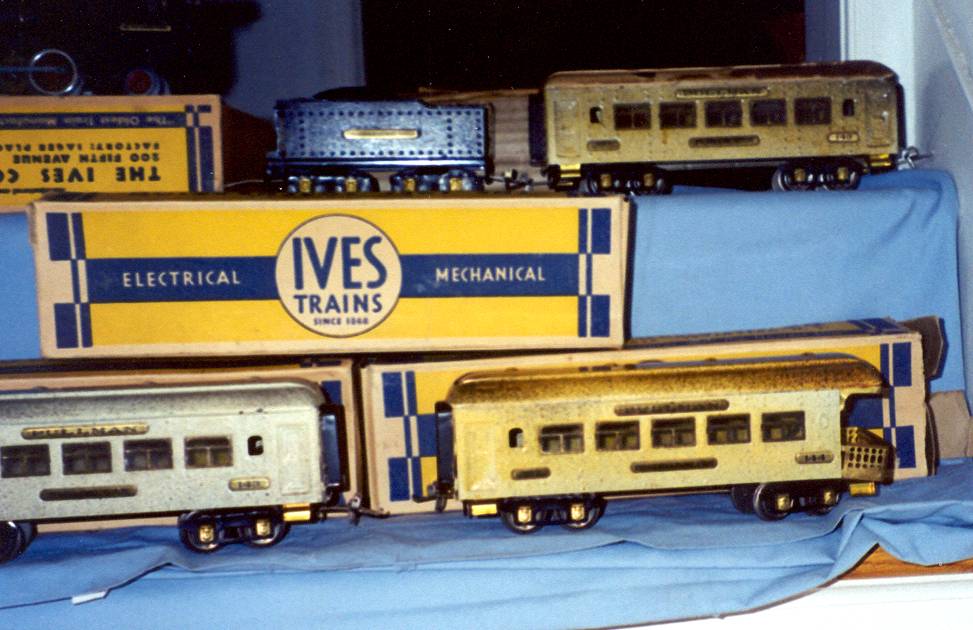
Cleaning out the factory in 1931 Lionel must have found some of these old Mottled gray cars laying around. This is an original set with boxes from 1931-32 that contained an 1122 locomotive pulling three of these mottled gray cars.
Circa 1929 - Copper plated with nickel trim, the Major HOD Seagrave Special Deluxe has type E, M-style trucks, snake pull couplers and nickel plated vestibules and observation platform.
Circa 1929 - Emerald green from the Dixie Flyer set. These cars are a darker green than the ones from 1928 and have black outside vestibules and snake pull couplers.
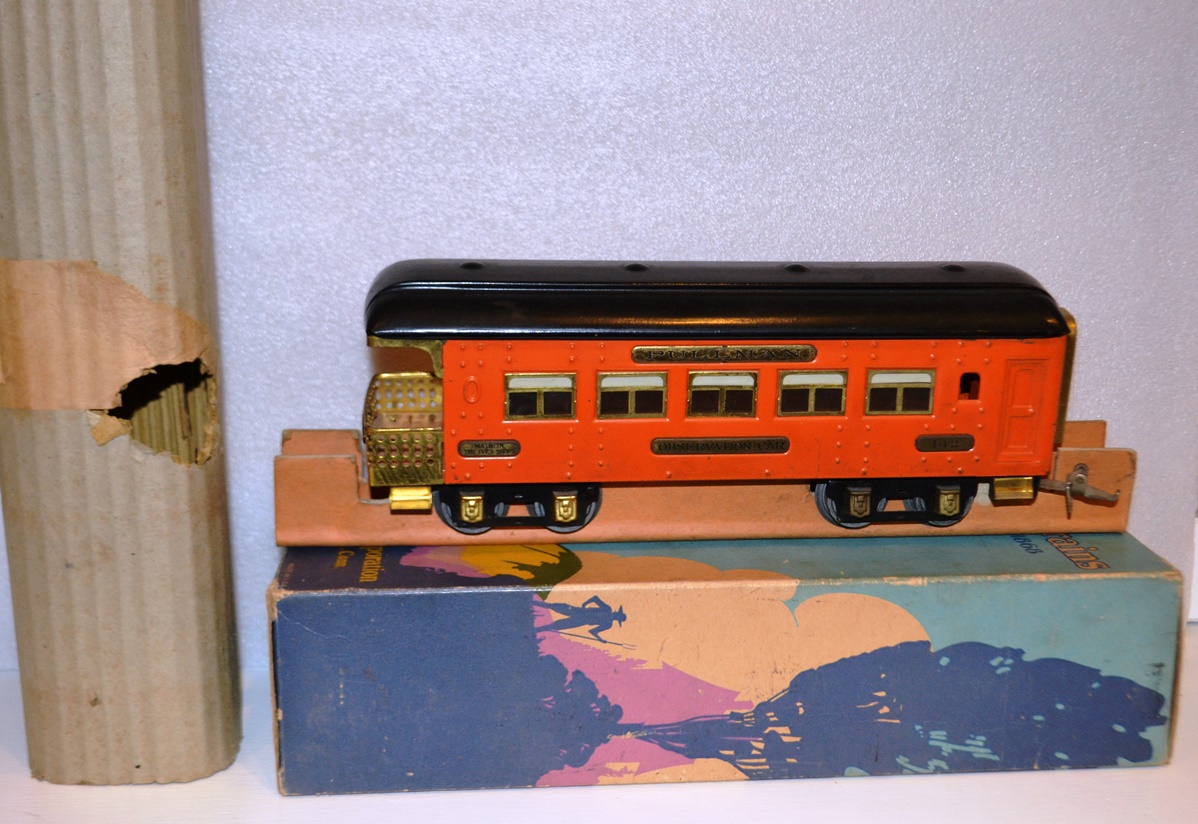
Circa 1930 - The above car Shows a 142 Observation and how it looked right out of box as it came from the factory with a stiff cardboard base to hold the trucks and the corrigated cardboard wrapper that sealed the car from any damage. The 1930 orange cars have black roofs, brass vestibules, type E, M-style trucks and the orange paint is much darker. In 1929 these cars came with an 1122 and is often referred to as the Halloween Set
| O Gauge | Locomotives | Passenger | Freight | Trolleys |
| Wide Gauge | Boats | Boxes | Specials | Index |
| One Gauge | Catalogs | Accessories | Wiring | Factory |
